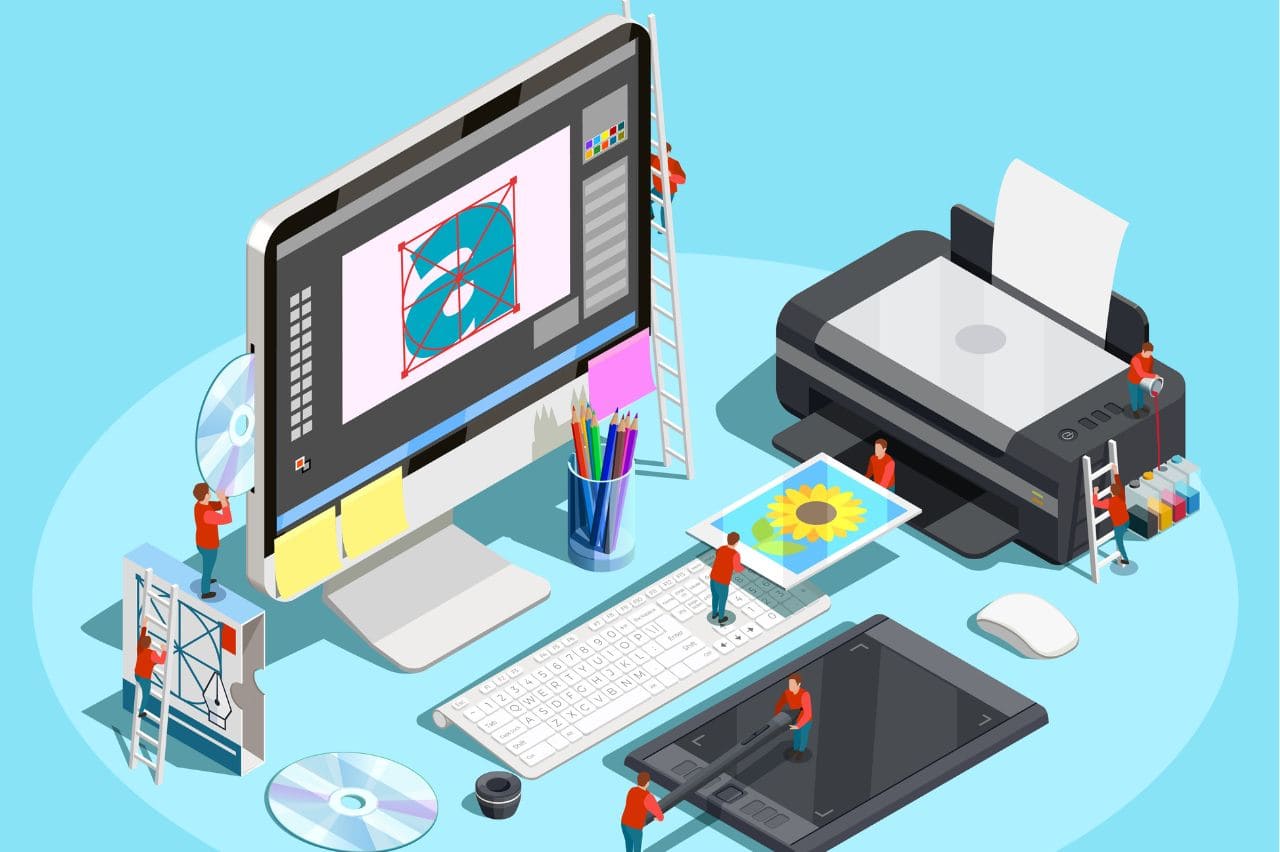
Graphic Design is a Monument to the Union of Creativity and Utility in the Broad Field of Visual Communication. The Path of a Graphic Designer Is An Intriguing Investigation Of Creativity, Ingenuity, And Problem-Solving From The Instant An Idea Takes Root In The Mind To Its Visual Representation on Screen. We Explore The Complex Procedure That Connects a Basic Sketch To The Finished Product on the Screen in This Blog.
The Spark of Creativity:
The First Step in Any Design Process is Inspiration. It Can be a Brief Flash Of Inspiration, a Provocative Idea, or a Client’s Vision That Has to be Brought to Life. Mood Boards, Research Projects, and Brainstorming Sessions are Hallmarks of The First Stage. Here, The Designer Delves Deeply Into The Background of The Project to Comprehend Its Goals, Intended Audience, and Intended Message.
Sketching the Blueprint:
Equipped With Perceptions And Concepts, The Designer Transforms Intangible Ideas Into Concrete Illustrations. The Layout, Typography, And Visual Components are All Laid Out in These Preliminary Drafts, Which Act as The Design’s Blueprint. Without The Limitations Of Digital Tools, Sketching Permits Experimentation, Concept Exploration, And The Flexibility to Let Imagination Run Wild. This Stage Allows For Creative Freedom and Brainstorming Before Committing to a Final Design. Sketching Also Helps in Identifying Potential Design Flaws Early on, Saving Time And Resources In The Long Run.
Refinement And Feedback:
It’s Time For Refinement After The Sketches Start To Take Shape. Every Iteration Is Assessed By The Designer, Who Then Fine-Tunes Details, Compositions, And Aesthetics. At This Point, Teamwork Is Essential Since Input From Clients Or Other Team Members Can Help Discover Strengths, Fix Shortcomings, And Move The Design In The Right Direction. This Stage Also Involves Gathering Feedback From Various Stakeholders To Ensure That The Design Aligns With The Project Goals And Meets The Needs Of The Target Audience. Collaboration And Communication Are Key During This Phase To Ensure A Successful Outcome.
Digitization And Execution:
With The Sketch Approved, The Design Makes Its Transition From Paper To Screen. Here, Digital Tools Come Into Play, Empowering The Designer To Bring Their Vision To Life With Precision And Finesse. Whether It’s Adobe Illustrator For Vector Graphics, Adobe Photoshop For Image Editing, Or Adobe Indesign For Layout Design, Each Software Serves As A Virtual Canvas For Creativity To Flourish.
Iterative Design Process:
Design Is An Iterative Process, And The Journey From Sketch To Screen Often Involves Multiple Rounds Of Revisions. Feedback Loops Are Essential In Refining The Design, Ensuring It Aligns With The Client’s Expectations And Meets The Project Objectives. Each Iteration Brings The Design Closer To Perfection, As It Evolves And Adapts Based On Insights Gathered Along The Way.
Attention To Detail:
Every Pixel Counts In Graphic Design. Since The Devil Is in The Details, Every Element of The Design is Carefully Considered, Including Typography, Color Schemes, Space, and Alignment. Coherence, Consistency, and Clarity are The Goals Of Designers; They Make Sure That Each Component Enhances The Overall Visual Appeal And Successfully Conveys The Intended Message. This Meticulous Approach Not Only Enhances The Aesthetic Appeal of The Design But Also Ensures That It Effectively Communicates The Client’s Brand Identity And Message to The Target Audience. By Focusing on Every Aspect Of The Design, Designers Can Create a Cohesive And Impactful Final Product That Resonates With Viewers.

Final Touches And Presentation:
The Finishing Details and Presentation Become More Important as The Design Draws To A Close. to Ensure Compatibility Across Platforms And Devices, This Entails Optimizing The Design For a Variety of Mediums and Formats. Extensive Care is Taken To Deliver a Finished Result That Captivates And Resonates With The Audience, Whether It’s Generating Print-Ready Files or Exporting Components for Digital Platforms. This Attention To Detail Helps Ensure That The Design Is Visually Appealing And Functional Across Different Channels. by Refining The Final Touches and Presentation, Designers Can Elevate The Overall Impact of Their Work And Leave a Lasting Impression on Their Target Audience.
Reflection And Learning:
Even Once The Project is Over and The Voyage Is Over, There is Still Opportunity For Introspection and Education. Designers Assess What Went Well, What May Be Done Better, And What Important Lessons Were Learned During The Process. Each Project is an Educational Opportunity That Advances The Designer’s Skill and Understanding Of Their Trade.
Conclusion:
The Creative Process of Graphic Design, From Sketch to Screen, Is A Monument to The Strength of Creativity, Ingenuity, And Skill. It’s A Journey Characterized By Creativity, Investigation, Teamwork, and an Unwavering Quest For Perfection. The Field Of Graphic Design Is Still One Of Creativity And Limitless Potential as Long as Designers Keep Pushing Limits, Questioning Norms, And Redefining Possibilities. The Process Teaches Designers To Think Critically, Problem-Solve, and Adapt To New Challenges. Ultimately, The Lessons Learned In Each Project Contribute to The Growth And Evolution Of A Designer’s Craft.

